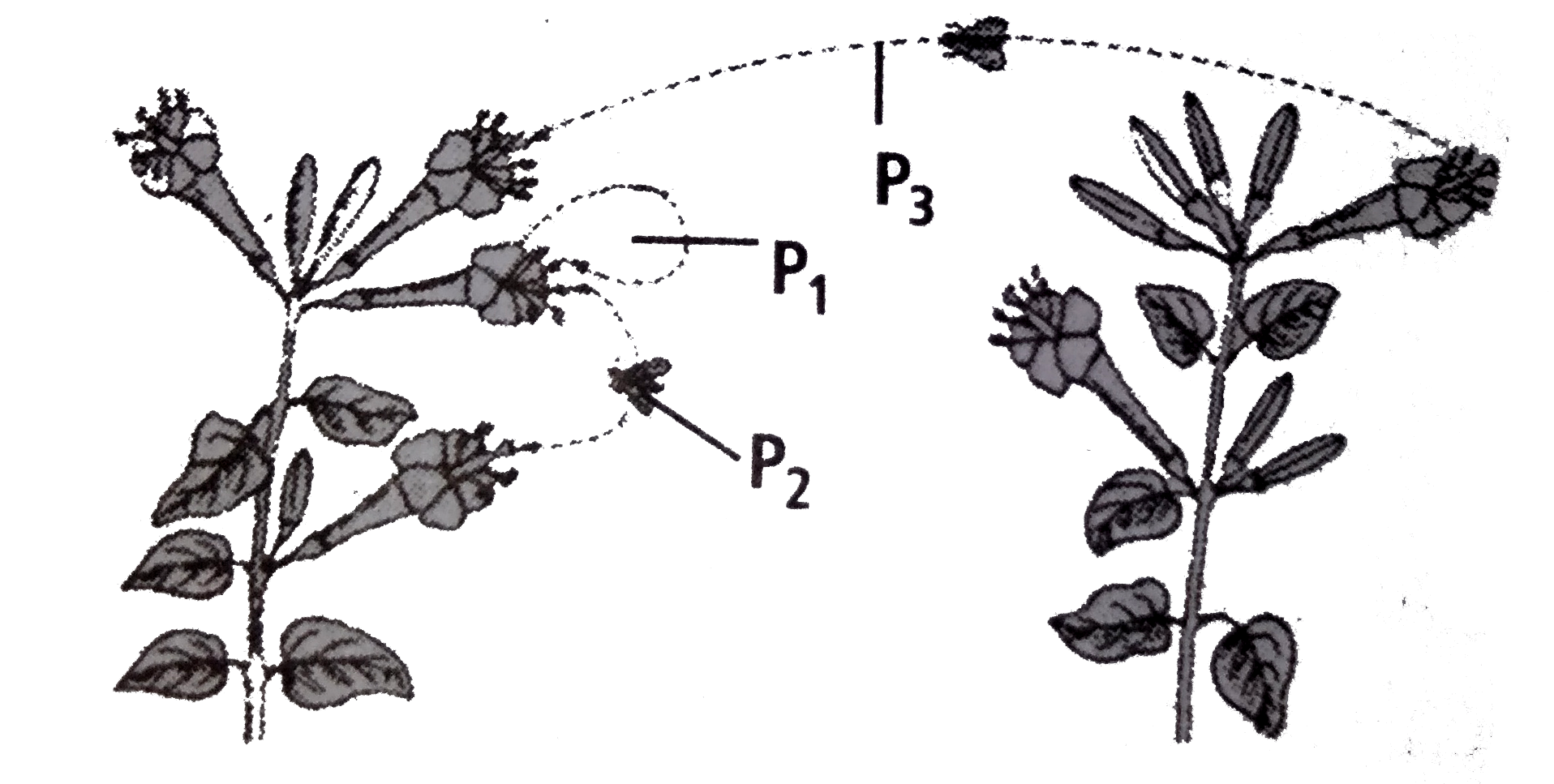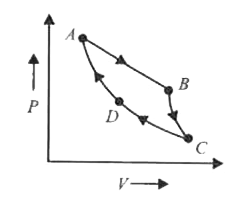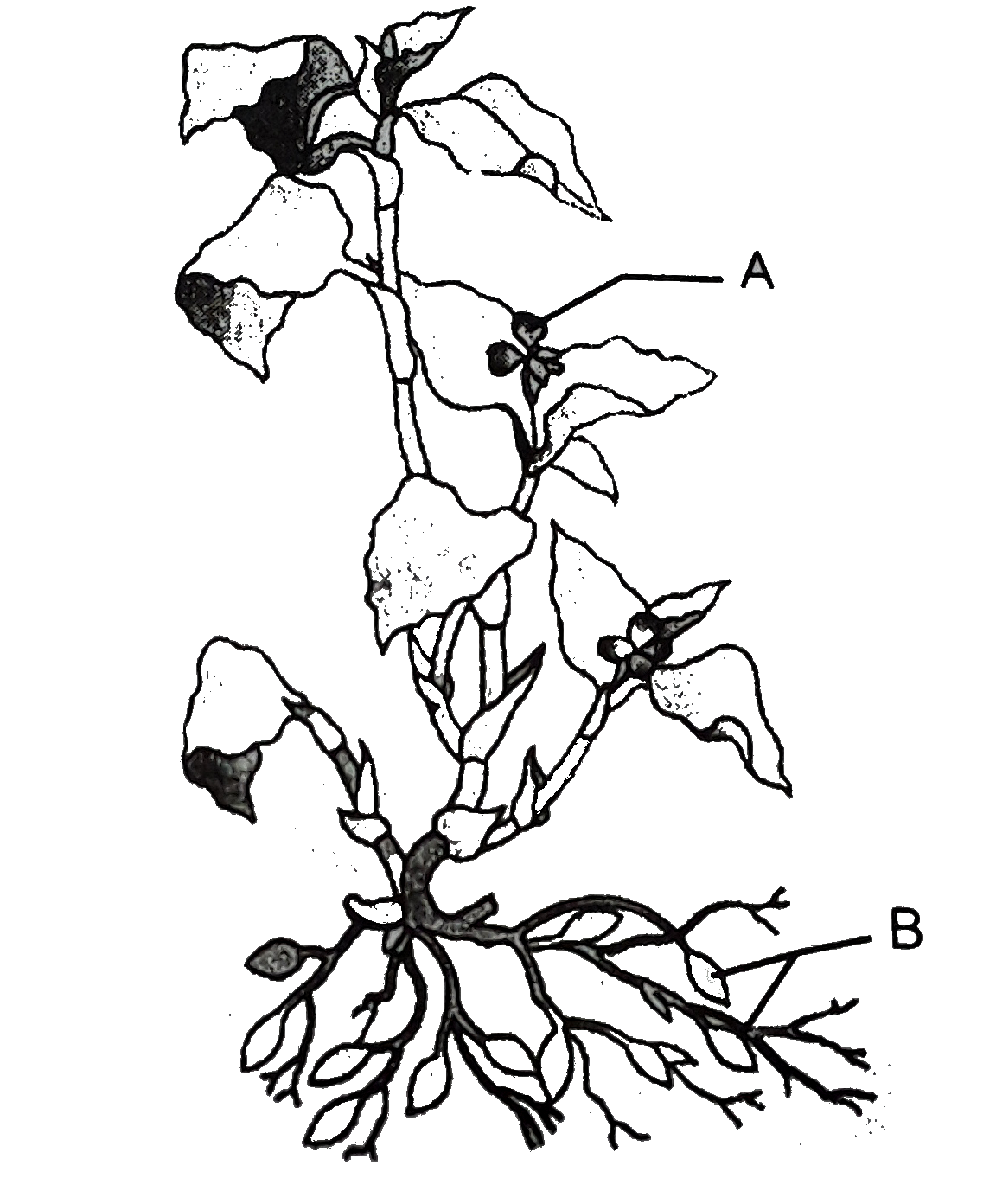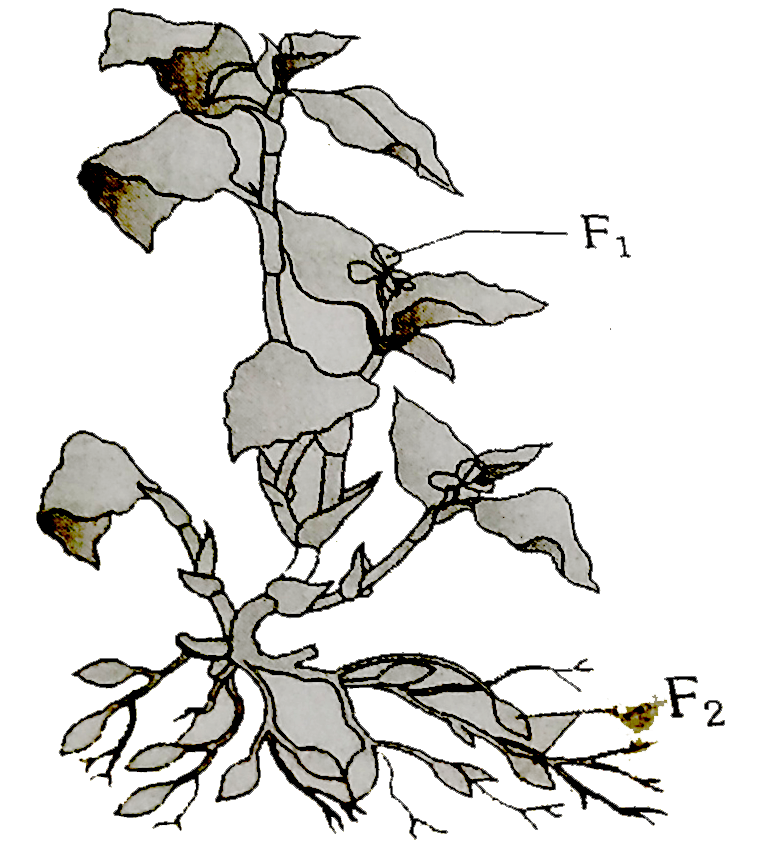The given diagram shows two plants of the same species. Identify the types of pollination indicated at P1,P2 and P3.

P1P2P3AllogamyChasmogamyCleistogamy
P1P2P3AutogamyXenogmayGeitonogamy
P1P2P3AutogamyGeithongamyXenogamy
P1P2P3GeitonogamyAllogamyAutogamy
The correct Answer is:C
Autogamy (GK. Autos-self, gamos-marriage) is a type of self pollination in which an intersexual or perfect flowers is pollinated by its own pollen. Geitonogamy (GK. Geiton-neighbour, gamos-marriage) is a type of pollination in which pollen grains of one flower are transferred to the stigma of another flower belonging to either the same plant or genetically similar plant. In geitonogamy, the flowers often show modifications similar to ones found in xenogamy or cross pollination. Xenogamy (GK. xenos-strange, gamos-marriage) or cross pollination is the transfer of pollen grains from anther of one flower to the stigma of a genetically different flower.
Topper's Solved these Questions
- REPRODUCTIVE HEALTHBOOK - NCERT FINGERTIPSCHAPTER - REPRODUCTIVE HEALTHEXERCISE - Reproductive Health
133 Videos
- STRATEGIES FOR ENHANCEMENT IN FOOD PRODUCTIONBOOK - NCERT FINGERTIPSCHAPTER - STRATEGIES FOR ENHANCEMENT IN FOOD PRODUCTIONEXERCISE - Strategies For Enhancement In Food Production
151 Videos
Similar Questions
(a) Using the phenomenon of polarisation, show how transverse nature of light can be demonstrated.
(b) Two polaroids P1andP2 are placed with their pass axes perpendicular to each other. Unpolarised light of intensity I0 is incident on P1. a third polaroid P3 is kept in between P1 and P2 such that its pass axis makes an angle of 30∘ with that of P1. determine the intensity of light transmitted through P1,P2andP3.
View SolutionExplain, with the help of a diagram, how plane polarised light can be produced by scattering of light from the Sun.
Two polaroids P1andP2 are placed with their pass axes perpendicular to each other. Unpolarised light of intensity I is incident on P1. a third polaroid P3 is kept between P1andP2 such that its pass axis makes an angle of 45∘ with that of P1. calculate the intensity of light transmitted through P1,P2andP3.
View Solution
Knowledge Check
The below figure shows 2 plants of the same species identify the types of pollination indicated as P1 P2 and P3
 A P1 P2 P3Autogamy Geitongamy XenogamyB P1 P2 P3Geitonogamy Allogamy AutogamyC P1 P2 P3Allogamy Chasmogamy CleistogamyD P1 P2 P3Autogamy Xenogamy Geitonogamy
A P1 P2 P3Autogamy Geitongamy XenogamyB P1 P2 P3Geitonogamy Allogamy AutogamyC P1 P2 P3Allogamy Chasmogamy CleistogamyD P1 P2 P3Autogamy Xenogamy Geitonogamy
P1,P2,P3,are:A B
B C
C D
D
The given figure shows the P−Vdiagram for a Camot cycle. In this diagram,
 Acurve AB represents isothermal process and BC adiabatic processBcurve AB represents adiabatic process and BC isothermal processCcurve CD represents isothermal process and DA adiabatic processDcurve CD represents adiabatic process and DA isothermal process.
Acurve AB represents isothermal process and BC adiabatic processBcurve AB represents adiabatic process and BC isothermal processCcurve CD represents isothermal process and DA adiabatic processDcurve CD represents adiabatic process and DA isothermal process.
(a) Using the phenomenon of polarization, show, how, transverse nature of light can be demonstrated.
(b) Two polaroids P1andP2 are placed with their pass axes perpendicular to each other. Unpolarised light of intensity 10 is incident on P1. A third polaroid P3 is kept in between P1andP2 such that its pass axis makes an angle of 30∘ with that of P1. Determine the intensity transmitted through P1,P2andP3.
View SolutionIn the figure given below the plant bears two different types of flowers marked 'A' and 'B'. Identify the types of flowers and state the type of pollination that will occur in them.

View SolutionThe given diagrams show four mercury barometers .
(i) If the value of external pressure in cases (i), (ii), (iii) and (iv) is represented by PI,PII,PIII and PIV respectively, then
If the value of external pressure in cases (i), (ii), (iii) and (iv) is represented by PI,PII,PIII and PIV respectively, then
View SolutionPollination between flowers borne on two different plants of the same species refers to:
View SolutionThe diagram given below shows the plant of Commelina with two type of flowers (F1andF2) the flowers are

View Solution
